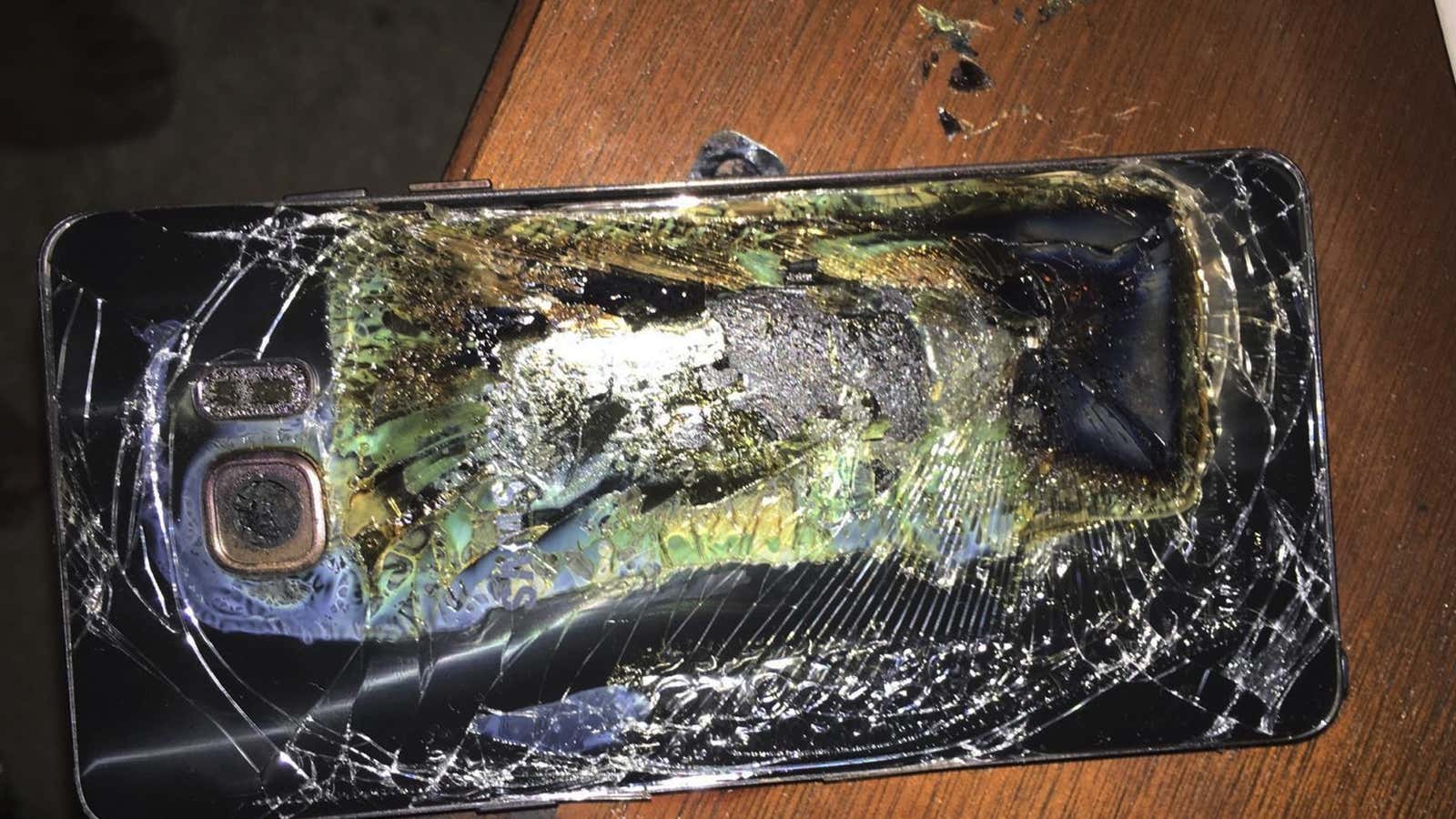It’s not every day that a company has to dispose of 4.3 million phones. But that day has come for Samsung, after exploding batteries forced it to issue a worldwide recall (paywall) of its Galaxy Note 7 smartphones.
The recalled devices, enough to fill 28 massive shipping containers, pose a massive waste problem. But environmental groups also see the debacle as a unique opportunity to change how the world deals with the billions of smartphones on the market. “Samsung now has an opportunity to set an example to the industry,” said Greenpeace in a statement. The environmental group called on the company to “totally rethink how it designs and produces its products,” and not repeat its response to its defective Anycall product line in 1995, which involved setting 150,000 phones on fire.
Samsung has not revealed its plans to deal with the phones, except to say that none of the recalled devices will be repaired, refurbished, or resold. “We have a process in place to safely dispose of the phones,” Samsung told Vice Media’s Motherboard, without providing further details.
Together, the recalled Galaxy Note 7 smartphones contain more than 20 metric tons of cobalt, more than one ton of tungsten, one ton of silver, 100 kilograms of gold, and between 20 and 60 kilograms of palladium, according to an analysis by researchers at the German sustainability research firm Oeko-Institut. Even more waste was produced refining hundreds of millions of tons of raw ore, using toxic chemicals such as mercury and arsenic, to get those materials.
Thanks to their relatively high precious metals content, smartphones are ranked as one of the most lucrative products to recycle (worth more than $1 billion per year, reports Greenpeace). But phones must first be efficiently collected, broken down and sorted for reuse in manufacturing. Typically, only a dozen of the 50 or so elements in smartphones are currently routinely recovered through recycling programs. The rest ends up polluting our environment.
Samsung’s recall may inspire much-needed improvements to the recycling process. Since retired smartphones trickle in by mail or drop-off centers over time, there hasn’t been a cheap, centralized system to recover them, says Alex King, the director of the US Department of Energy’s materials institute in Motherboard. Samsung’s recall, he says, is the first time a company will reclaim a whole generation of phones all at once, and attempt to overcome those barriers.
Correction: This story was corrected to indicate that Samsung was recalling 4.3 million phones.




